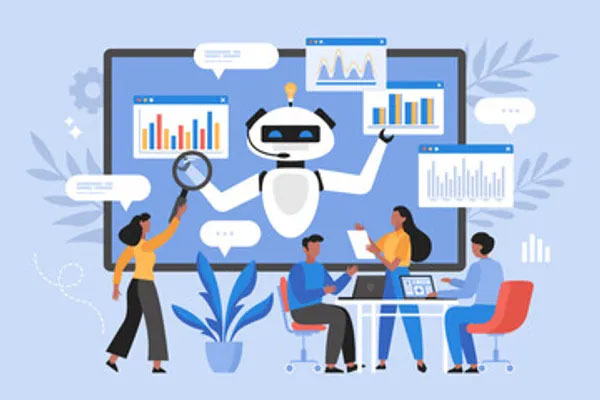My previous blogs have discussed the history, definition, and hype around Generative AI (Artificial intelligence). Generative AI, a subset of artificial intelligence, involves systems that generate new content or data rather than just analyzing existing data. In this blog, I will cover some of the benefits and promising practical applications of Generative (Gen) AI.
Some of the benefits of generative AI include faster product development, enhanced customer experience, and improved employee productivity, but the specifics depend on the use case. Organizations looking to be early adapters should be realistic about the value they are looking to achieve, especially when using a service as is, which has significant limitations. One key point to remember is that Generative AI currently creates artifacts that can be inaccurate or biased, making human validation essential and potentially limiting the time it saves workers. KPIs (Key Performance Indicators) need to be tied to use cases to ensure that any project either improves operational efficiency or creates net new revenue or better experiences. Following are some benefits and applications of Generative AI:
Benefits:
Creativity Enhancement: Generative AI can enhance creativity in various fields, such as art, music, and design. It can generate novel and unique content that humans may not have created.
Content Creation: Generative AI can automate content creation, including writing articles, generating images, or producing videos. This can be particularly useful for businesses producing large amounts of content efficiently.
Data Augmentation: In machine learning, generative models can be used for data augmentation. By generating additional training data, models can be trained more effectively, leading to better performance.
Personalization: Generative AI can create personalized content and user recommendations based on their preferences and behavior. This is valuable in areas such as marketing and user experience.
Simulation and Training: Generative models can simulate real-world scenarios, which is beneficial for training. For example, in autonomous vehicle development, generative models can simulate various driving conditions for training AI algorithms.
Drug Discovery: In the pharmaceutical industry, generative models can be applied to discover new drug candidates. These models can generate molecular structures that may have therapeutic properties.
Anomaly Detection: Generative models can be used for anomaly detection by learning the normal patterns within data. Any deviation from these learned patterns can be flagged as an anomaly.
Some of the Promising Applications:
Natural Language Generation (NLG): Generative AI is widely used in natural language generation for tasks like text completion, language translation, and chatbot responses.
Image Generation: Generative models generate realistic images, such as Generative Adversarial Networks (GANs). This has applications in art, design, and even synthetic data generation for training computer vision models.
Music Composition: Generative models can compose music based on learned patterns from existing compositions. This has implications for music creation and personalized music recommendations.
Video Game Design: In the gaming industry, generative AI can create virtual environments, characters, and storylines, providing a dynamic and adaptive gaming experience.
Deepfake Technology: While controversial, generative AI creates deepfake videos, generating realistic-looking content to manipulate or replace existing video footage.
Financial Forecasting: Generative models can be used for forecasting financial time series, helping analysts predict market trends and stock prices.
Healthcare Imaging: In medical imaging, generative models can assist in generating synthetic images for training machine learning models, especially when real data is limited.
In a recent Gartner webinar poll of more than 2,500 executives, 38% indicated that customer experience and retention are the primary purpose of their generative AI investments. This was followed by revenue growth (26%), cost optimization (17%) and business continuity (7%).
Generative AI continues to evolve, and its applications are expanding across various industries, showcasing its versatility in creating and enhancing content across different domains. It’s essential to consider ethical implications and potential biases when deploying generative AI in real-world applications.





